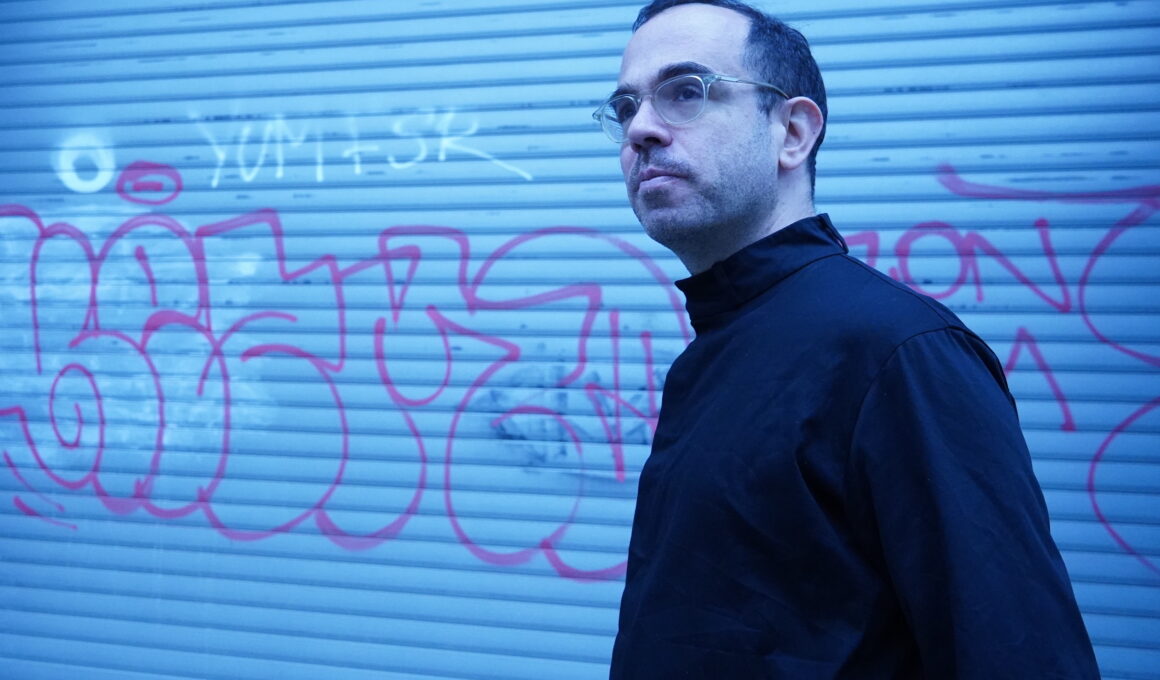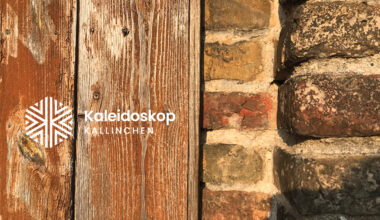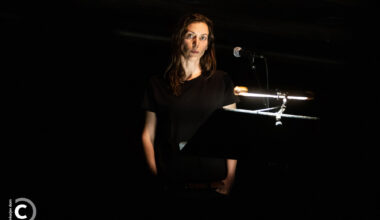Confounding efforts to pin down his output, composer and journalist PETER KIRN can be found alternatively writing about technology, making raucous club music, working on the MeeBlip synth project, and producing experimental electronics. The MusicMakers Hacklab he’s co-hosted since 2013 with CTM Festival assembles elements as diverse as witchcraft, needleplay, and noise. This year, his release for Feral Note (KLANGBOX) joins releases in dark ambient music (Industrial Complexx), techno (TRAPEZ), and leftfield sounds with collaborator Nerk (on his own Establishment). Meanwhile, he continues to churn out daily writing for CDM.link plus contributions for Resident Advisor, Bjooks’ tome on Roland and others, and recently joined exchanges with the Beirut Synthesizer Center.
FACTS
1. Where I grew up, there is an enormous rock bed of Devonian limestone, from around 380 million years ago, full of brachiopods and corals.
2. The amount of politics currently hinging on transphobic toilet obsessions is astonishing, horrifying, and exasperating. (see Putin, Jordan Peterson, Elon…)
3. Black noise is the near-silent noise spectrum that now forms cosmic background hum, evidence of the Big Bang. Wow.
QUESTIONS
1. What is the biggest inspiration for your music?
In my absolute happiest dream states at night, I find myself hearing or singing or making music. So this is perhaps just the work of trying to get into that state in waking life.
2. How and when did you get into making music?
I was fortunate to have an Everett spinet piano in my home. There are pictures of me at it as barely more than infant; being at the keys is one of my earliest memories. My grandmother also regularly threatened to hit me with a large wooden spoon she had if I didn’t practice, though this was mainly for dramatic effect; it never happened. I was also fascinated with synthesizers and computers and electronic sounds I heard on TV, and even as a kid in the 80s, convinced that this was one way I wanted to make music, so I looked for the earliest opportunity. In 1995 at a summer program in Oberlin, I dragged a Yamaha Clavinova and a Mac tower onstage and linked the two with Interactor by Mark Coniglio, and it was love.
3. What are 5 of your favourite albums of all time?
Maybe best to reflect on which ones first opened me to new directions –
1. As a kid, would lie on the couch and listen to this Deutsche Grammafon box set of Beethoven’s symphonies – must have been Karajan and Berlin. I would close my eyes and all these fantastical landscapes would open up. Music as mind journey, which came to mean a lot of things that are not at all like Beethoven to me.
2. Meredith Monk – ATLAS (on ECM New Series, from a performance at NYC’s old Power Station)… gotten to sing some of this, and Meredith is an inspiration partly because of her connection to dance.
3. Laurie Anderson – Puppet Motel on Voyager multimedia CD-ROM – I still hope that we imagine new directions for the album; Hsin-Chien Huang’s interaction design is so elegant and moving.
4. Umm Kulthum – Al Sett – just a classic…
5. Senyawa – Aliksah – speaking of new directions for the album, the endlessly remixed decentralized model here to me is world-changing. It means you can keep listening to this album over and over again in versions from Beirut to Berlin to Beijing to Bandung. And the message here is a perfect encapsulation of zeitgeist.
4. What do you associate with Berlin?
Berlin is constant change – and now, a city of refugees from serious life-threatening strife, bringing back exactly the energies it once tried to eradicate.
5. What’s your favourite place in your town?
There’s a special place in my heart for Kuntsquartier Bethanien, for its kitas and galleries and Käsespätzle. It’s a community space; it’s perfect Kreuzberg. And we’ve had such special moments there from CTM to Tehran Contemporary music…
6. If there was no music in the world, what would you do instead?
I would probably be a journalist or activist, especially as I’ve at various times disrupted my life by attempting to be one or the other.
7. What was the last record/music you bought?
Let’s check Bandcamp. LTC1799 Detriutus by Suren Seneviratne, music made on a circuit-bent KAOSS Pad. Beautiful stuff.
8. Who would you most like to collaborate with?
My favorite collaborations were all with choreographers so – you know where to find me, call any time.
9. What was your best gig (as performer or spectator)?
I don’t really rank or compare them. It meant a whole lot to me to play this year in Beirut on the rooftop – thanks Omar – amidst clanging bells. Then again, it also meant a lot to play “Believe” in the first proper crowded club gig I had after lots of isolation, at Ballroom Blitz, which is what I imagined doing with that track.
10. How important is technology to your creative process?
I think what’s held my interest in technology is that it is compositional. There’s compositional intent in how you design an instrument – then again in how you learn it – then again in beginning to misuse it or bend it past its purpose. The idea of separating technology from music is this old problem of separating body and mind, your ego from the people you draw from. Technology embodies all those things. It’s physical and human and an extension of nature – even if it threatens to destroy nature at times.
11. Please tell us a little bit about your musical contributions for the new KLANGBOX IV release.
The concept of all four of these tracks was perpetual motion in some sense – and often differently moving lines, endlessly turning, so that you’re not certain whether something is speeding up or slowing. (That may describe our present moment on some other level.) I think these all began loosely as software modular constructions in VCV Rack, with some others playing with physical modeling and tuning. They’re a sort of combination between live performance and constructed composition – improvised threads, composed layers. But everything is synthetic, even if synthetically they imagine sounds that could come from some dreamt-of acoustic instrument in some cosmic reality.


